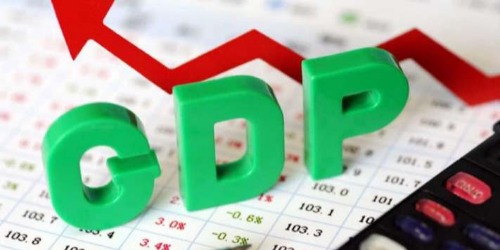GDP to grow at 5.5% in FY21 but downside risks persist

Expecting a marginal improvement over the gross domestic product (GDP) growth of 5 per cent estimated by National Statistical Office for FY20, India Ratings and Research estimates GDP to grow at 5.5 per cent year-on-year in fiscal year 2020-21, however, the downside risks persist. The slowdown, in the agency's view, is a combination of several factors including an abrupt and significant fall in lending by non-banking financial companies, reduced income growth of households coupled with a fall in savings and higher leverage, and inability of the dispute resolution or judicial systems to quickly unlock the stuck capital.
Although some improvement in FY21 is expected, these risks are going to persist. As a result, the Indian economy is stuck in a phase of low consumption as well as low investment demand. Ind-Ra believes a strong policy push coupled with some heavy-lifting (even if this requires using the escape clause as suggested by the FRBM Review Committee headed by N K Singh) by the government is required to revive the domestic demand cycle and catapult the economy back into a high growth phase.
The government has announced a slew of measures recently to prop-up the economy, but Ind-Ra believes they will come to aid only in the medium term. Therefore, all eyes are on the forthcoming union budget, to be presented on February 1, 2020. It expects the shortfall in the tax plus non-tax revenue to result in the fiscal deficit slipping to 3.6 per cent of GDP (budgeted 3.3 per cent) in FY20, even after accounting for the surplus transferred by the RBI. A continuance of low GDP growth even in FY21 means subdued tax revenue and limited room for stepping-up expenditure. "The government will have to construct the FY21 budget in a way that expenditure is rationalised and prioritised and all avenues of revenue generation are tapped. While rationalising, the focus of expenditure has to be on creating direct employment and putting more money in the pockets of the people at the bottom of the pyramid," the agency added.
Gross fixed capital formation (GFCF) has become government dependent, as incremental private capex has been down and out. Despite the fiscal constraints, the government has not shied away from infrastructure spending in the past and even resorted to fund them through extra budgetary resources. Ind-Ra, therefore, believes the government will continue to focus on infrastructure spending and leverage all possible options - budget, off budget including National Infrastructure Investment Fund. Also, since a larger part of the government capex now takes place at the state government level, it will be important to keep a tab on the state government capex as well.
Notably, the higher award recommended by the 14th Finance Commission to the states was mostly spent on capex. Ind-Ra thus expects GFCF and government final consumption expenditure to grow at 5.3 per cent and 9 per cent, respectively, in FY21 (FY20: 1.0 per cent and 10.5 per cent). Further, it expects private final consumption expenditure (PFCE) to grow at 6 per cent in FY21. The key support to PFCE could come from rural demand, which may see an uptick due to a higher rabi output.
Food and crude oil prices are the key drivers of inflation in India. Though oil prices are stable, retail food inflation after remaining subdued and in single digit for 70 months since January 2014, entered into double digits in November 2019 and accelerated to 14.12 per cent in December 2019. This means, in the near term, further monetary easing is ruled out and we may have to brace for an extended pause on the policy rate, it added. However, the minor improvement in FY21 fiscal deficit from FY20's coupled with moderate inflation may keep 10-year G-sec rate in the 6.8-6.9 per cent range by end-March 2021.
Ind-Ra expects external environment to improve somewhat in FY21. This is likely to help India's exports of goods and services to grow by 7.2 per cent and the current account deficit to decline marginally to $32.7 billion, 1.1 per cent of GDP in FY21
- 0
- Leave a comment


